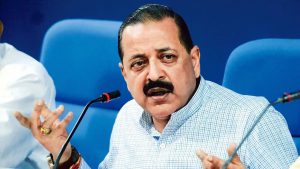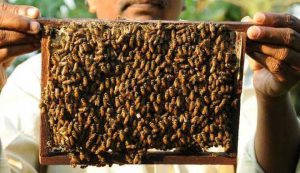Bureaucratic inefficiencies, delays at the state level, and a slow pace of implementation are robbing millions of farmers of money the government promised they would get.
New Delhi: Only 4.12 crore farmer families in the country are eligible to receive all four installments that will be due by the end of March 2020 under PM Kisan, according to information provided by the CEO of the scheme, Vivek Aggarwal.
This is because the Ministry of Agriculture and Farmers’ Welfare has decided to not make payments with retrospective effect. So only those farmers – numbering 4.12 crore – who had been registered in the first period will be eligible to receive all four installments.
Even though 4.12 crore farmer families received the first installment under PM Kisan in the first period, using some creative accounting – as we will explain in this article – the PM Kisan database available on the internet lists 7.17 crore farmer families as having received the first installment.
As per the original estimate of the Centre, 12.5 crore small and marginal farmers were to receive the benefit of the scheme in which three installments of Rs 2,000 each are to be paid to eligible farmer families in one financial year. That number was revised to 14.5 crore farmers when the scheme was extended to all farmers after the National Democratic Alliance returned for a second term in May this year.
Apart from the fact that the government did not have a database of farmers in India at the time the scheme was launched, another reason provided by the CEO of PM Kisan Vivek Aggarwal for being unable to spend the entire Rs 75,000 crore allocation is that state governments have delayed providing data on farmers in their states or not provided any data at all like in the case of West Bengal.
This has meant that even those farmers who are eligible to benefit from PM Kisan as per the definition of ‘farmer family’ for the purpose of the scheme have not received at least one installment of the three that are due to them this financial year.
Let’s try and break it down to understand this better. By March 31, 2020, all farmer families in the country should receive four installments of Rs 2,000 if the scheme is implemented perfectly.
The first installment pertains to the 2018-19 financial year, as the scheme was implemented retrospectively to ensure that the first tranche could be paid before May 2019 when the Lok Sabha elections began.
The period for which this payment was to be made was December 2018 to March 2019. That was, thus, the first period of the PM Kisan scheme.
The second period began in April and ended in July 2019. The third period is from August to November 2019, and the fourth will be from December 2019 to March 2020.
Ideally, all farmer families should have received the first installment in the first period, the second installment in the second period, and so on. But that has not happened.
In the first period, a total of 4.12 crore farmers – or 28% of the original estimate – received Rs 2,000 as income transfer under PM Kisan according to information provided by Aggarwal. As per the PM Kisan database available on the internet, the number of farmers who have received the first installment is much higher, at 7.17 crore, as of October 30.
The difference is a result of some creative accounting deployed by the Ministry of Agriculture and Farmers’ Welfare to maintain the database that is made available on the Internet. As Aggarwal explained to us, a farmer is listed as having received the first installment even if the installment is received in the second period or in the third period.
So, for instance, if a farmer was registered under PM Kisan in May 2019, i.e., in the second period, she will receive her first installment, her second installment in the third period, and so on.
She would be listed as having received the first installment even when she is not eligible to receive the Rs 2,000 due for the first period as the ministry has decided that payment will not be made with retrospective effect.
This practice has led to an inflated figure of 7.17 crore farmers who have received the first installment as per the PM Kisan database available online, when only 4.12 crore farmers received the Rs 2,000 installment in the first period, i.e., December 2018 to March 2019.
Now, if we assume that the number of farmer families in India is 14.5 crore, as was done when the scheme was launched (although, the number is around 26.5 crore based on the Census 2011 data and the ministry’s definition of farmers), and we know that 4.12 crore farmer families received the first instalment in the first period. Then, over 10 crore farmer families will not receive the benefit of the first-period installment as payments are not being made with retrospective effect.
This also means that only 4.12 crore farmers are entitled to receive all four installments of PM Kisan that are due till the end of March 2020. This is because the ministry will not be making retrospective payments implying that those who did not register in the first period will be ineligible to receive at least one instalment out of the four.
In effect, 3.05 crore farmers who have been registered under PM Kisan after the first period will not receive at least one installment of Rs 2,000 this financial year.
Due to how the database is maintained, the Ministry of Agriculture and Farmers’ Welfare will encounter a peculiar situation when the fourth installment from December 2019 to March 2020 is due.
As per the system followed by the ministry, only those farmer families who were registered in the first period, i.e., December 2018 to March 2019, will be eligible to receive the fourth installment in the fourth period as the ministry has decided to not make payments with retrospective effect.
So, only the 4.12 crore who were registered in the first period will be due their fourth installment in the fourth period. For the others, who were registered in later periods, the fourth instalment will not be due until next year.
Now, more than 4.12 crore farmer families are likely to receive a Rs 2,000 installment in the fourth period as the farmers registered after the first period will receive one installment and more farmers are likely to be registered in the fourth period. But not more than 4.12 crore farmer families can be listed as having received the fourth installment by the end of March 2020 if the method currently deployed continues to be followed.
The pace of implementation of PM Kisan has also slowed since the May 2019 Lok Sabha elections as only 2.57 crore farmers were registered in the second period (April 2019 to July 2019), compared with 4.12 crore farmers who were registered in the first period (December 2018 to March 2019).
Since then the pace has been even slower, with only 39 lakh farmers having been registered in the third period (August to November 2019) as of October 25, 2019. With only a month to go before the window of the third period closes, it is unlikely that the number will exceed the number of farmers registered in the first period before the Lok Sabha elections.
So in all, only 7.17 crore farmer families have been registered and transferred at least one instalment of Rs 2,000 under PM Kisan in the almost nine months since the scheme was launched in February.
Vivek Aggarwal, the CEO of the scheme, is of the view that finally the number of beneficiaries who will be registered under PM Kisan will be around 10 crore, significantly lower than the 14.5 crore initially estimated.
If this guesstimate is correct, then a budgetary allocation of Rs 60,000 crore will be sufficient to provide all three installments to all the 10 crore farmer families as per the definition under PM Kisan. This is significantly lower than the Rs 75,000 crore allocated for the 2019-20 financial year, and the Rs 87,000 crore which was estimated to be required when the scheme was extended to all farmers.
“The data for several farmers that we are getting is less than the original estimate. When the number of eligible farmers is lower, the total expenditure will also be lower,” said Aggarwal. “The original estimate was not based on farmers but on landholdings. We can’t transfer money based on landholdings.”
Finally, it seems that the PM Kisan scheme will fall well short of achieving its objective of providing income support to all farmers in the country. The target of doubling farmers’ income by 2022 looks all the more daunting given the underwhelming performance of one of the key policy interventions of the Modi government.




